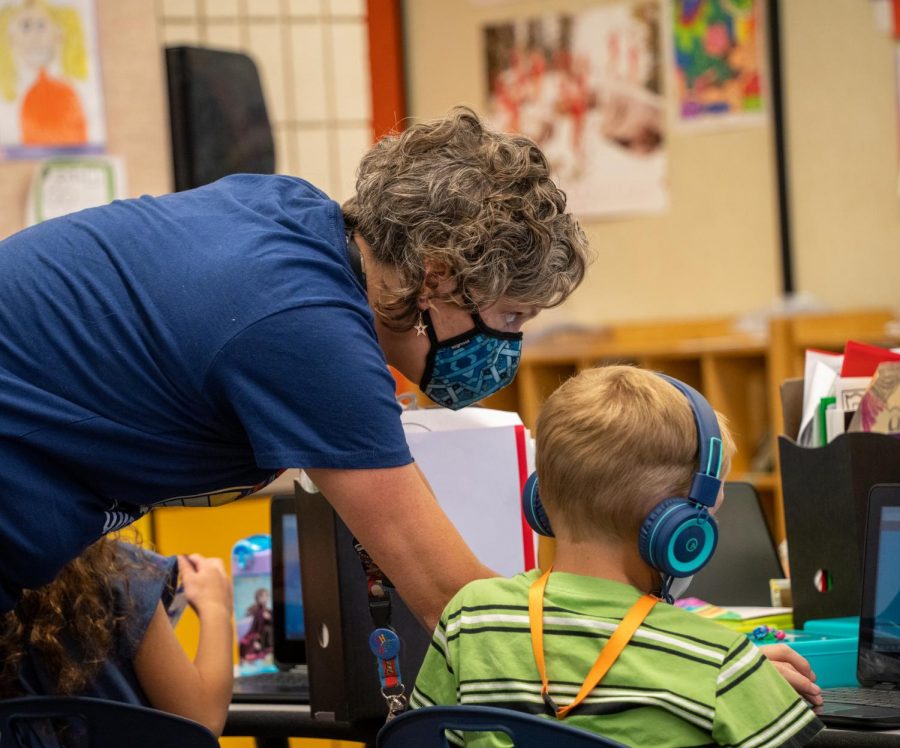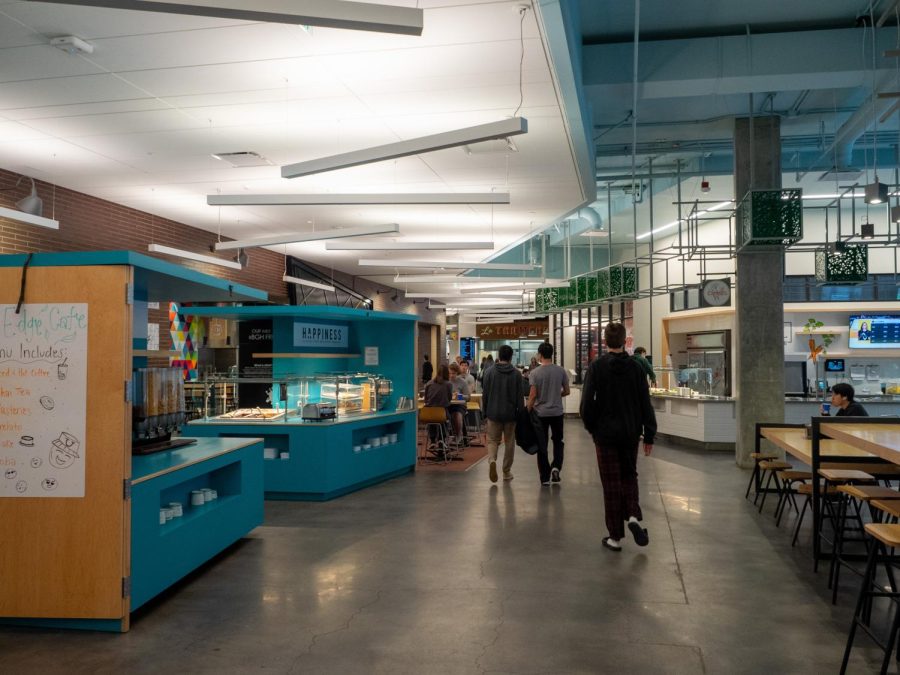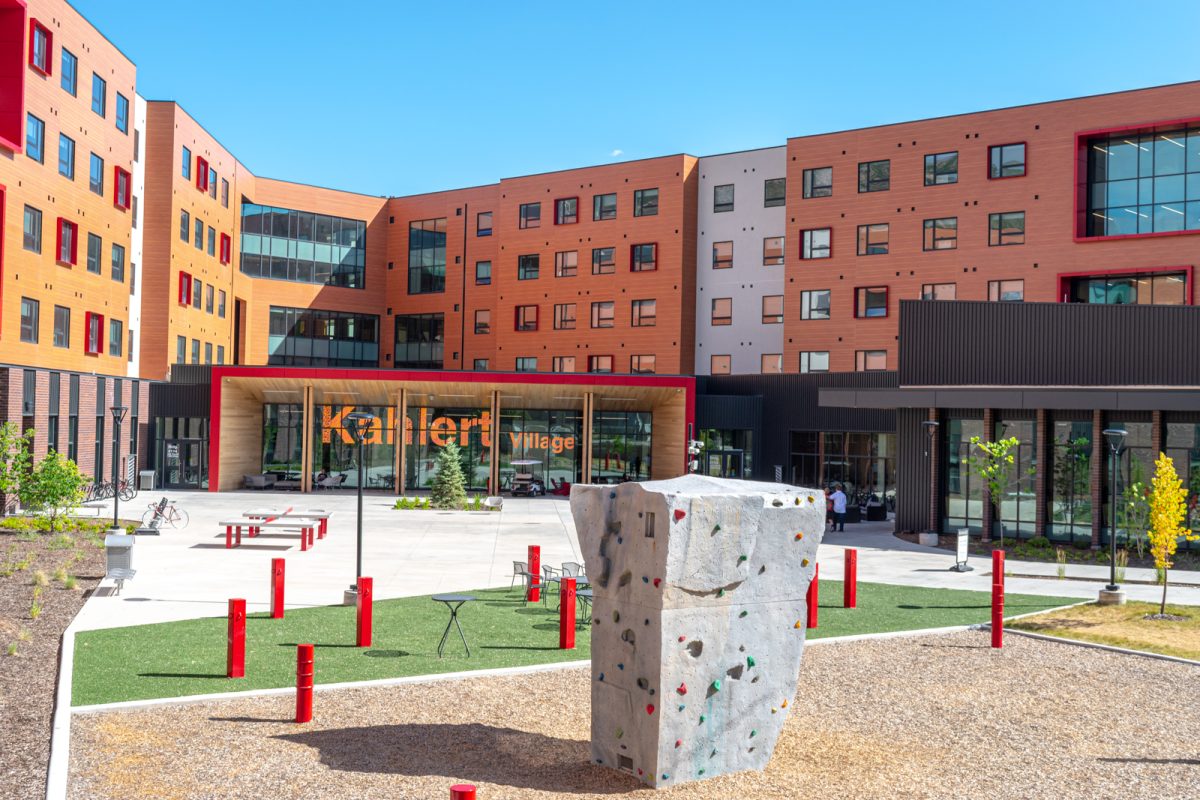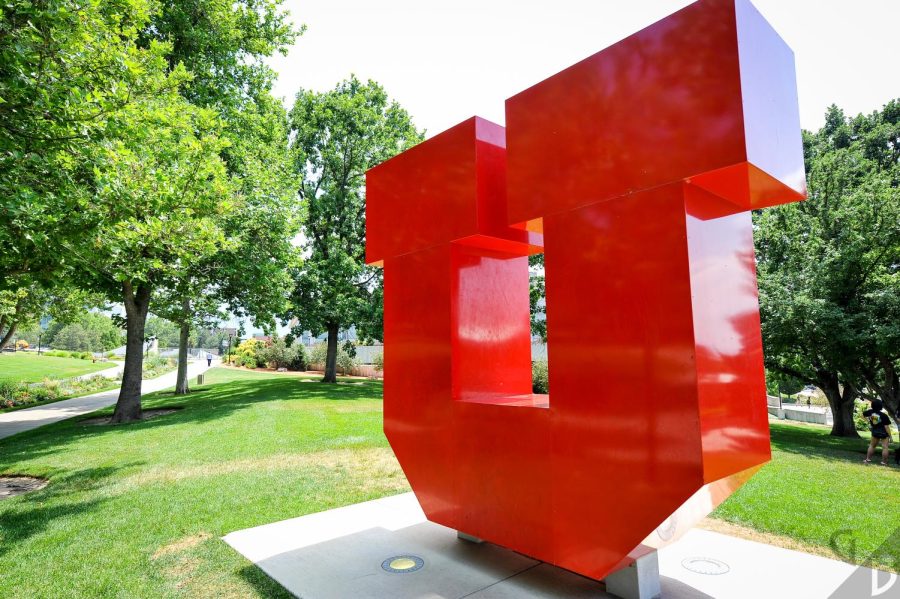Soter: COVID-19 Learning Loss Is a Problem for Lawmakers
Teacher, Sarah Machol helps a student in Wasatch Elementary School, Salt Lake City, Utah on Sept. 17th, 2021. (Photo by Xiangyao “Axe” Tang | The Daily Utah Chronicle)
February 18, 2021
The world shut down during my last semester of high school. Everything turned upside down when school moved online. Teachers no longer knew how to teach; students no longer knew how to learn. My curriculum quickly turned into nothing more than busy work, making my virtual graduation that much more of a relief. I was no longer a victim of the unnavigable maze of remote learning. But nearly 12 months have passed, and online learning is still hurting thousands of Utah students. Public schools in Utah must address the learning loss that has come with the pandemic — and new state policies might be the only way to get there.
Thousands of children in Utah have failed one or more classes in the last year. In the first quarter of this school year, almost 14,000 students got at least one failing grade in Granite School District alone. That’s more than double the number of students who failed a class in the early fall of 2019. Even worse, 1,200 Granite District students failed not just one but all of their first quarter classes. Of those students, 73% attended school online. And while all Utah school districts are now providing an in-person option for students, many don’t have the luxury of physically coming to school because the risks are still so high. These appalling statistics make clear the intense toll remote learning is taking on students statewide. Utah is in dire need of a solution.
But severe learning loss isn’t unique to Utah. Grades are declining nationwide. In fact, a late 2020 study of 900 different schools found that, as a result of the pandemic, students across the country learned only 87% of the reading curriculum and 67% of the math curriculum that they would’ve covered in a normal year. The impacts of that learning loss are immense. Experts predict a 3% decline in lifetime income for students affected by COVID-19 school closures. Based on this estimate, countries’ annual GDPs could be 1.5% lower for the rest of the century than they would have been otherwise.
And of course, COVID-19 learning loss is felt disproportionately among students of color, many of whom are of lower socioeconomic status thanks to systemic racism. In the same 900-school study, researchers found that schools that predominantly serve students of color covered only 59% of their math curriculum and 77% of their reading curriculum for the last school year. This disparity in the public school system is especially acute in light of the fact that the opportunity gap has caused learning loss among students of color since long before the pandemic.
The problem has only gotten worse since March of last year, when schools initially shut down. Many of the nation’s most vulnerable students were left without access to basic technology like high-speed internet or computers, meaning they couldn’t complete their schoolwork. And although the lockdown was months ago, some 72% of students, many of whom are from low-income families, are still learning partially or completely online. This is because the pandemic has hit low-income, immigrant and families of color much harder than their affluent white counterparts due to poor access to adequate healthcare and a host of other institutionalized problems — many students and families from these groups feel the risks of COVID-19 outweigh the benefits of in-person learning. So while students in the classroom are beginning to catch up on missed curriculum, many students of lower socioeconomic status remain at home and continue to fall behind.
In response to this devastating problem, the Utah State Board of Education has asked lawmakers for $260 million dollars to address the learning loss in our state. The sum will be split up between this school year and the next, with the bulk — $200 million — reserved for 2021-22. The money will be used to fund supplemental teaching for students, summer and after-school programs, social-emotional support and educator trainings. In addition, legislative auditors are urging school districts to drop soft closure policies and put in place the “Test to Stay” model. This means that instead of schools completely closing when they reach a certain number of cases, all students will be tested for the coronavirus at that stage, and those who test negative will remain in school while positive testers switch to remote learning for a minimum of two weeks. The encouraged model would offer more students the opportunity to remain in school and mitigate further learning loss.
But even if the board gets their $260 million, the problem of educational inequity will be far from solved. Public schools will need more funding, and soon. If Utah lawmakers are smart, they’ll supply the necessary aid before the effects of learning loss prove too ruinous to mend.












